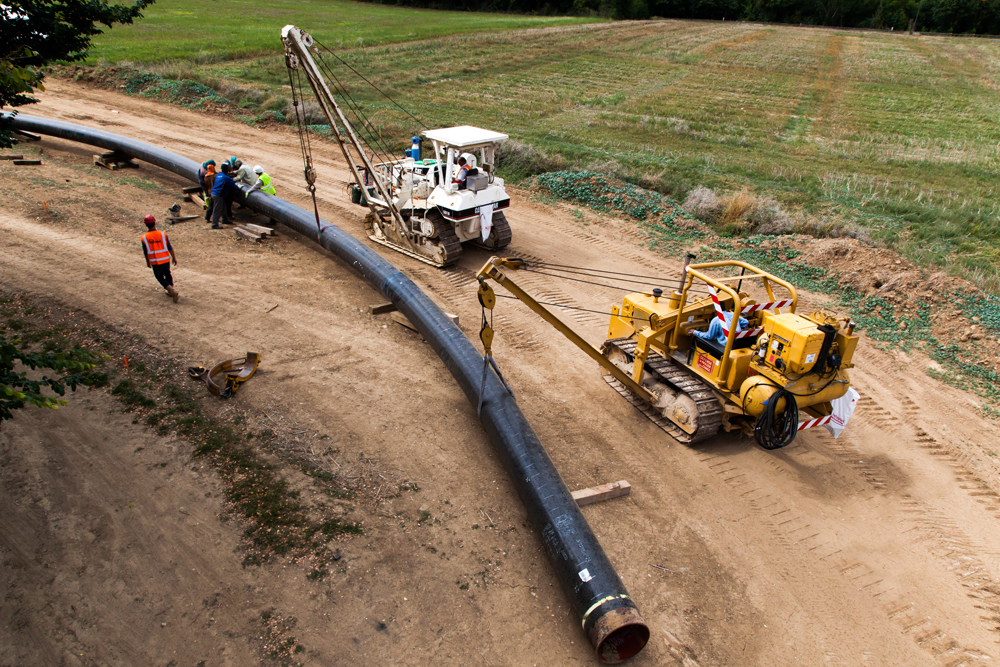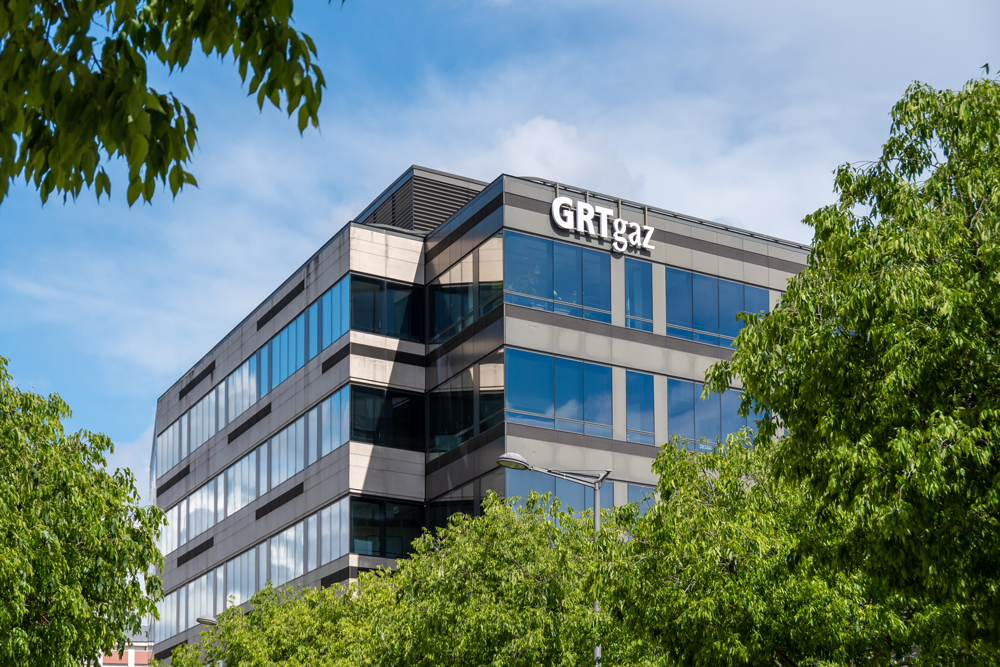September 2024, Vol. 251, No. 9
Features
French Pipeline Sector Moving Toward Hydrogen
By Eugene Gerden, P&GJ International Correspondent
(P&GJ) — France is actively developing its pipeline network, as part of ambitious state plans to turn the country into one of the largest natural gas and hydrogen hubs in Europe in years to come.
France currently experiences a shortage of active domestic natural gas fields, after the end of commercial exploitation of the Lacq deposit in the fall of 2013.
In the 1970s, France’s natural gas production was around 80 TWh per year; natural gas production within the country is now significantly restricted, in order to promote the sustainable use of the resources still available. There is still low gas production, particularly off the coast of Brittany and in the Gulf of Lion; however, despite this, almost 98-99% of the country’s needs in natural gas are met by imports.
Still, despite the lack of domestic natural gas production, the French pipelines network is currently considered one of the most modern and well-developed in Europe, being linked to major European production hubs.
As experts of the French Energy Regulatory Commission (CRE) — the independent authority responsible for regulation of the French energy market — said recently that the French gas transmission network is currently directly connected to the Norwegian North Sea production fields, as well as to the networks of four European countries: Belgium, Germany, Switzerland and Spain.
In 2023, imports of pipeline gas to the country amounted to 2,385 GWh/day, while exports were 799 GWh/day. The French network is also connected to the global LNG market via four onshore LNG terminals in Montoir-de-Bretagne, Fos-sur-Mer (x2) and Dunkirk, which provide an import capacity of 1,309 GWh/day.
In order to respond to the very significant drop in Russian gas supplies to Europe, delivery capacities to Germany were established in the fall of 2022, amounting to 100 GWh/d. Also, a floating LNG terminal (FSRU) was commissioned in Le Havre in the fall of 2023, which enabled the supply of nearly 150 GWh/d of gas onto the French network.
In general, the development of interconnections with Belgium, Germany and Switzerland has led to a doubling of gas import capacities in France in the last 10 years.
At present, the French pipelines network is managed by two major domestic operators — GRTgaz (a subsidiary of Engie) and Teréga. The latter is mostly active in the North-West part of the country.
The gas transmission network of France has a length of more than 23,301 miles (37,500 km), of which 20,140 mi (32,414 km) are managed by GRTgaz and 3,190 miles (5,136 km) by Térega. Most of this infrastructure is located underground, which prevents external aggression and damage to the environment.
Over the last decade, GRTgaz and Teréga have significantly developed their networks by creating new interconnection capacities with neighboring countries, developing entry capacities from LNG terminals and strengthening the national network.
In recent years, both companies have announced their ambitious plans for turning into the largest operators not only in France, but the entire European continent, paying a particular attention to hydrogen, considering it as a promising area of their further expansion.
In case of GRTgaz, at the end of April, the company announced an investment of $43.2 million (€40 million) in the Mosahyc project — the first gas pipeline to supply hydrogen between two E.U. Member States, specifically France and Germany.
According to Sandrine Meunier, CEO of GRTgaz, “This is a pioneering project, which involves building a 56-mile (90-km) pipeline that will transport hydrogen between France and Germany, with commissioning scheduled for the end of 2027.”
As she has also added, implementation of the project will have huge importance for France and the whole Europe.
“Given France’s geographical position, this will enable the company to be positioned at the heart of the European hydrogen market and to connect the markets of Northern and Southern Europe,” Meunier said.
She also believes this will contribute to “France’s energy sovereignty” and is a first step in the construction of a large European hydrogen market, as part of the large-scale European Hydrogen Backbone network project set to be completed by 2040.
Mosahyc’s aim is to supply the German Dillingen steelworks, a subsidiary of the Stahl-Holding-Saar (SHS) conglomerate, which wants to switch its steel production process from coal to hydrogen.
SHS has committed over 25 years to purchase 80% of the annual hydrogen transport capacity of the gas pipeline, or 50,000 tons. Mosahyc will convert an existing gas pipeline to hydrogen and require investments of $119 million (€110 million). GRTgaz will provide $43.2 million (€40 million), while the German partner, Creos, will provide about $75.8 million (€70 million).
In fact, Mosahyc is part of the many hydrogen projects launched by GRTgaz across France, including Dhune in Dunkirk and HYnframed in Fos-sur-Mer, which are the most advanced and are scheduled to be commissioned in 2028. For other territorial and interconnection projects, their commissioning is set for 2029-30.
In total, the company plans for overall investments in these projects in the amount of $7.58 billion (€7 billion), most of which will be allocated in interconnection projects.
As Anthony Mazzenga, development director at GRTgaz, told French television network BFM TV, “These investments are worth the cost, as despite the current difficulties that and slowdowns in many industrial sectors throughout the EU, the demand for hydrogen is growing, mostly from global chemicals, fertilizers and even steel producers, being part of their decarbonization strategies and a few years before the end of free CO2 quotas.”
In the meantime, in addition to GRTgaz, Teréga also is considering a number of projects that will involve pipelines’ hydrogen transportation.
In recent months, the company has also launched several initiatives that outline the contours of its hydrogen infrastructures. Based in the Nouvelle-Aquitaine — a region that features a large open coastline along the Atlantic Ocean — Teréga wants to benefit from strategic position of its pipelines’ infrastructure between Spain, which wants to produce green hydrogen on a massive scale, and Northern Europe, which hopes to decarbonize its industrial hubs.
As part of these plans, the company has recently launched HySoW — a project that aims to connect the main industrial hubs of the southwest, from Port-la-Nouvelle to Bordeaux, via Toulouse and Bayonne.
This involves 373 miles (600 km) of pipes that will connect the production sites and the future European hydrogen backbone: H2Med and the major consumption sites. Though part of the gas infrastructure (about 40%) could be reused due to the announced drop in gas consumption, another part will have to be built.
Dominique Mockly, CEO of Teréga, told the company earlier that she is still considering the prospects of the project.
“We are in an evaluation phase. We are not yet talking about commitments, but this will allow us to have a better idea of these ecosystems,” she said.
Still, according to some reports of French media, commitments on production and consumption could be made already within the next several months, while Teréga is currently counting on the transport of 16 TWh of hydrogen per year.
As for hydrogen, France has its own hydrogen strategy at present, which was published in September 2020 and has some major differences compared to its European neighbors.
While the Netherlands and Germany highlighted the issue of transporting hydrogen, primarily to global market, France, on the contrary, traditionally insisted on the production and supply of green hydrogen, primarily for domestic needs, as part of its plans to achieve sovereignty for the decarbonization of its industry and transport. Still, amid the current volatility in global energy markets and the ongoing Russian-Ukranian war, the importance for the development of all-European large-scale infrastructures—capable of continuously delivering large volumes of hydrogen, preferably green (along with natural gas)—has become obvious for the French government and local pipelines’ operators.
Due to this, France became one of the main authors of the international BarMar project, which involves the building of an underwater gas pipeline to link France with Spain.
This pipeline must primarily transport green hydrogen from Spain or the Maghreb (Northwest Africa) (up to two million tonnes per year, or 10% of Europe’s estimated consumption in 2030), but it can also transport other renewable gases and even natural gas, in limited volumes.
A year ago, the French government had, in fact, declared that these infrastructures must be “technically adapted to transport other renewable gases, as well as a limited proportion of energy.” However, other partners insist that the pipeline would be entirely focused on the supplies of hydrogen.
It is expected that the BarMar project will replace the Midi-Catalonia Pipeline, which will probably be finally cancelled after several years of lobbying by the Spanish government, as part of its plan to make the country a hydrogen hub in Europe and to solve the problem of the Iberian Peninsula’s energy isolation.







Comments